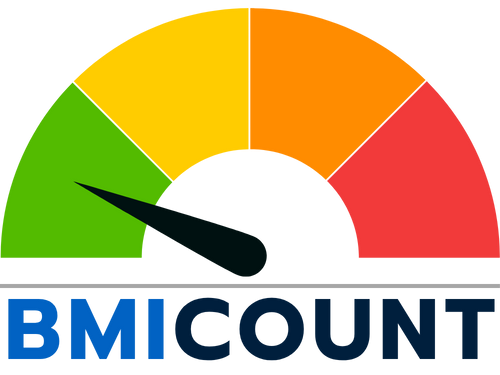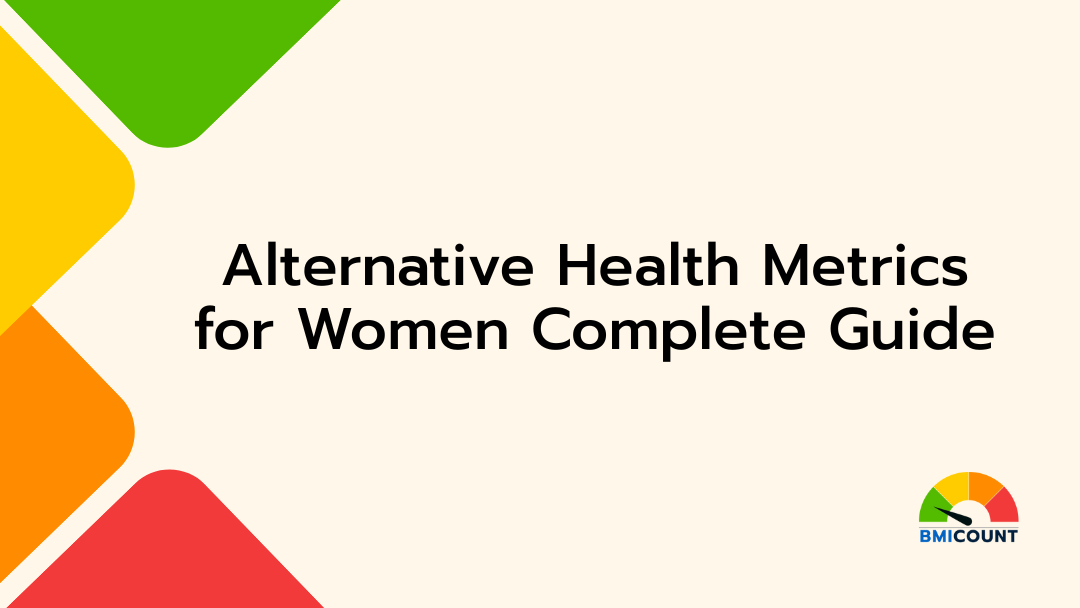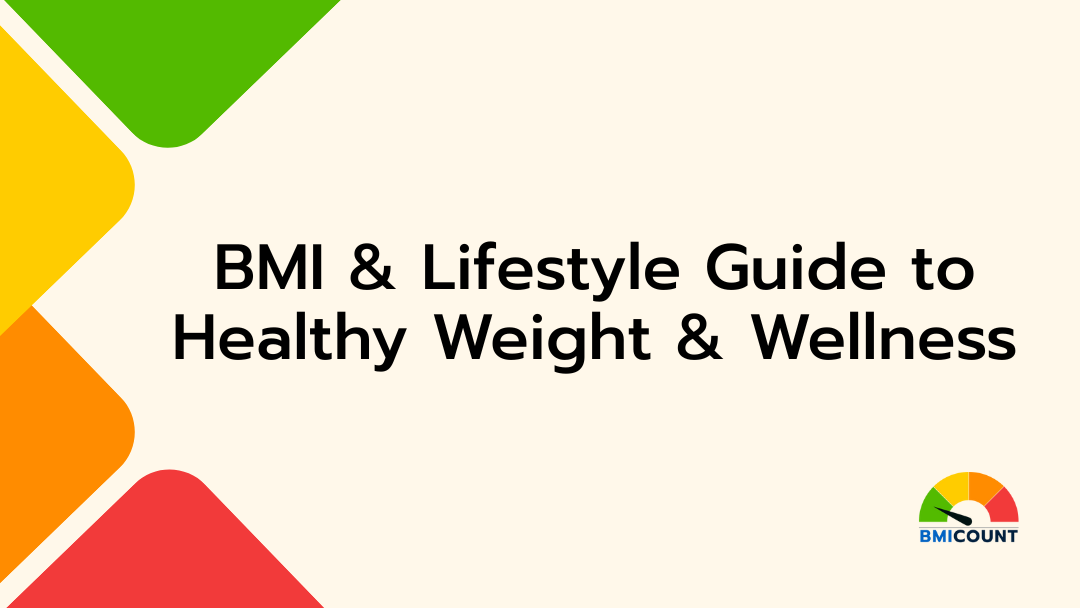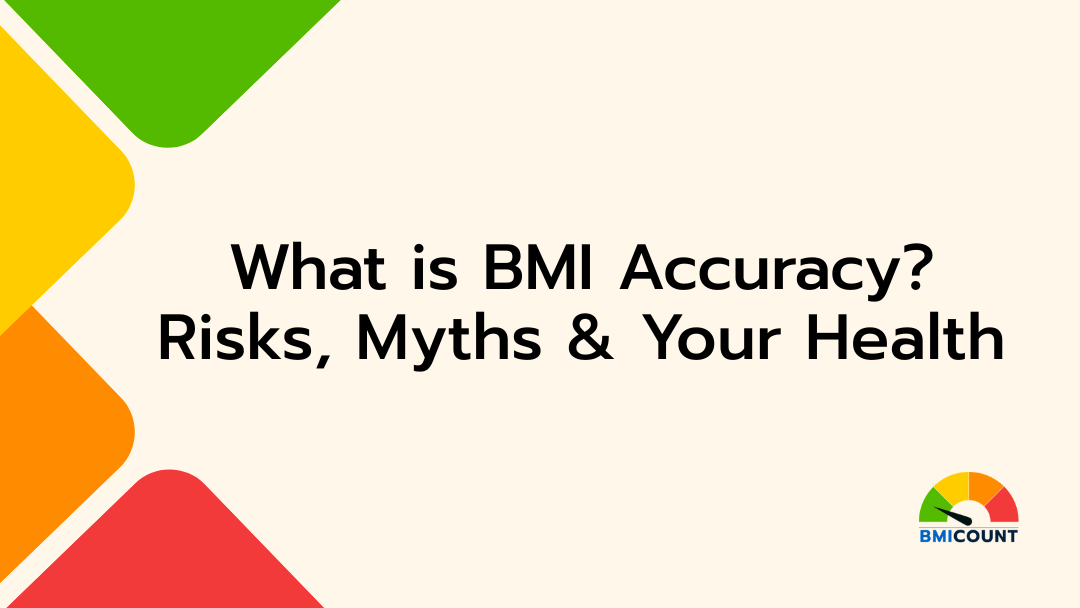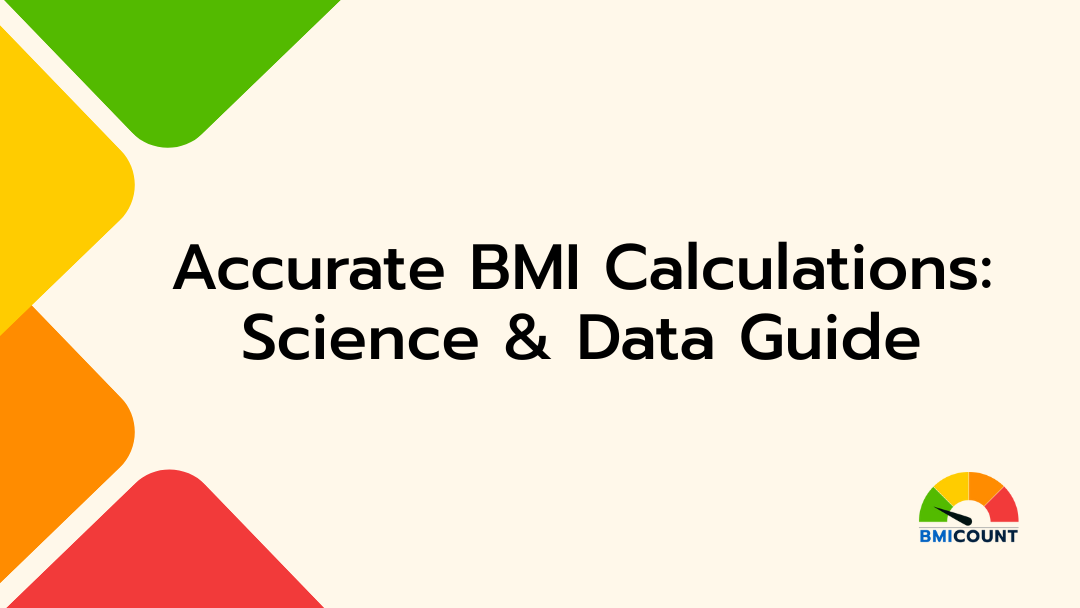Full Picture for Alternative BMI Metrics Women
When it comes to measuring health, BMI (Body Mass Index) is often the first number we see. But for women, relying on BMI alone can be misleading. That’s why this guide to alternative health metrics for women guide exists — to help you go beyond a single number and understand what truly matters for your health.
Female bodies are shaped by a unique set of physiological and hormonal factors that BMI doesn’t account for. Whether it’s the hormonal shifts during menstruation, the weight changes in pregnancy, or fat redistribution after menopause, each stage of life tells a different story. Your body composition, fat distribution, and metabolic health deserve more attention than a simple weight-to-height formula can offer.
In this article, we’ll explore the most important alternative BMI metrics women should track including healthy body fat percentage for women, waist-to-hip ratio, hormonal influence on weight, and how female body fat distribution affects wellness outcomes. These deeper metrics give you a clearer view of your true health status and help you make better-informed lifestyle choices.
“Women’s health can’t be measured by BMI alone. Hormones, fat distribution, and lifestyle patterns tell the fuller story your body’s been trying to show.”
Use our BMI Calculator for Women to get quick insights tailored to female physiology. It’s fast, free, and built for your body type.
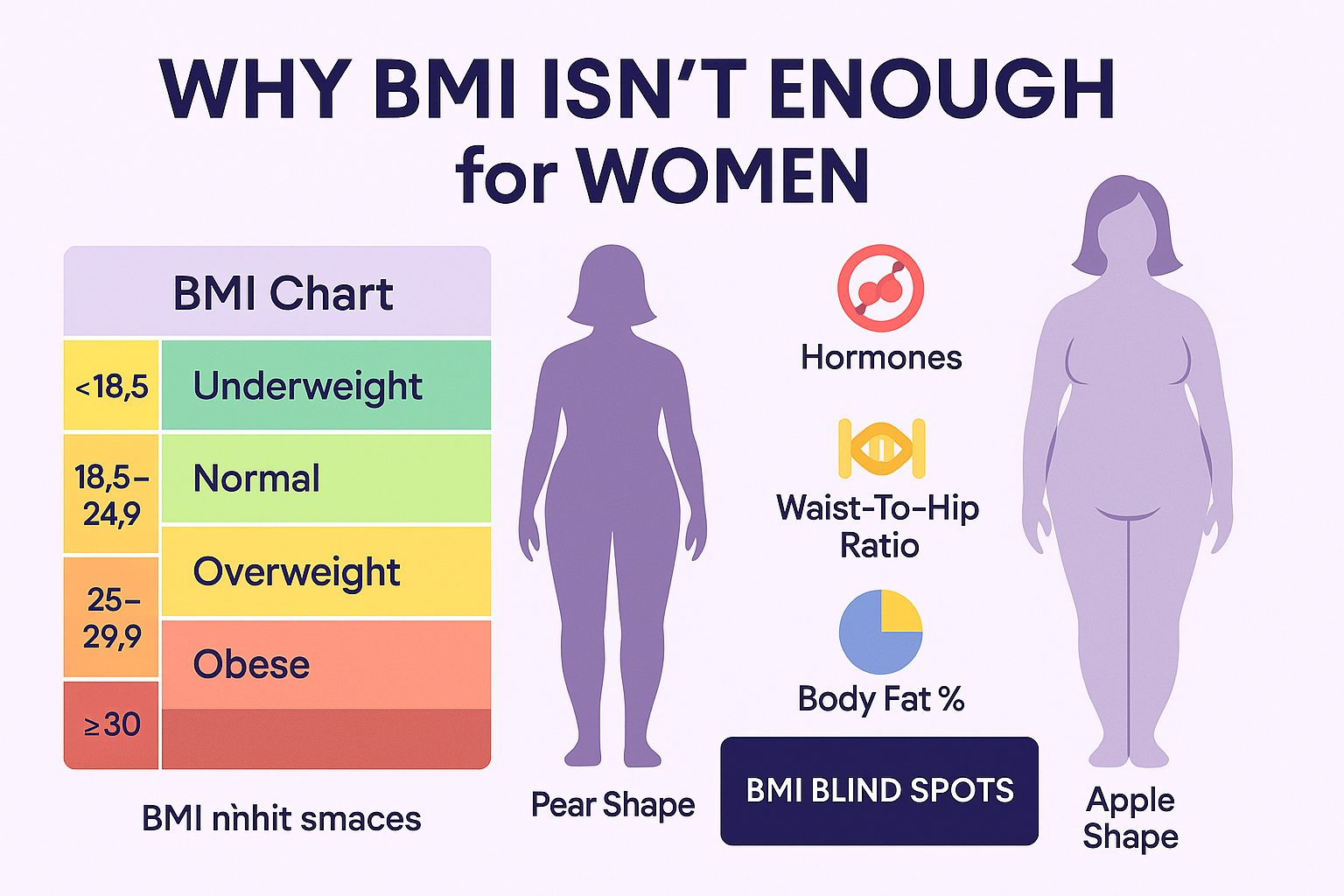
Why Alternative Health Metrics for Women Matter More Than BMI
While BMI may give a rough estimate of body weight in relation to height, it doesn’t tell you how much of that weight is fat or where it’s stored. This is why knowing your ideal body fat for women is more valuable when assessing real health.
The healthy body fat percentage for women varies depending on age, activity level, and life stage. Athletes will naturally fall on the lower end, while average and older women may carry more fat without it being unhealthy. It’s not about being “thin” it’s about what your body is made of.
Healthy Body Fat Percentage by Age & Lifestyle
| Age Group | Athlete | Fit/Active | Average | Obese |
|---|---|---|---|---|
| 20–29 | 14–20% | 21–24% | 25–31% | 32%+ |
| 30–39 | 15–21% | 22–26% | 27–33% | 34%+ |
| 40–59 | 16–23% | 24–28% | 29–35% | 36%+ |
| 60+ | 17–24% | 25–30% | 31–36% | 37%+ |
These numbers reflect ideal body fat for women by general health standards — and not appearance.
Why It Matters More Than BMI
- Two women with the same BMI can have very different body compositions
- One may have high lean muscle; the other, excess fat
- A healthy BMI with a high body fat percentage still poses risk for diabetes or heart disease
That’s why tracking the healthy body fat percentage for women can catch health risks that BMI might miss entirely.
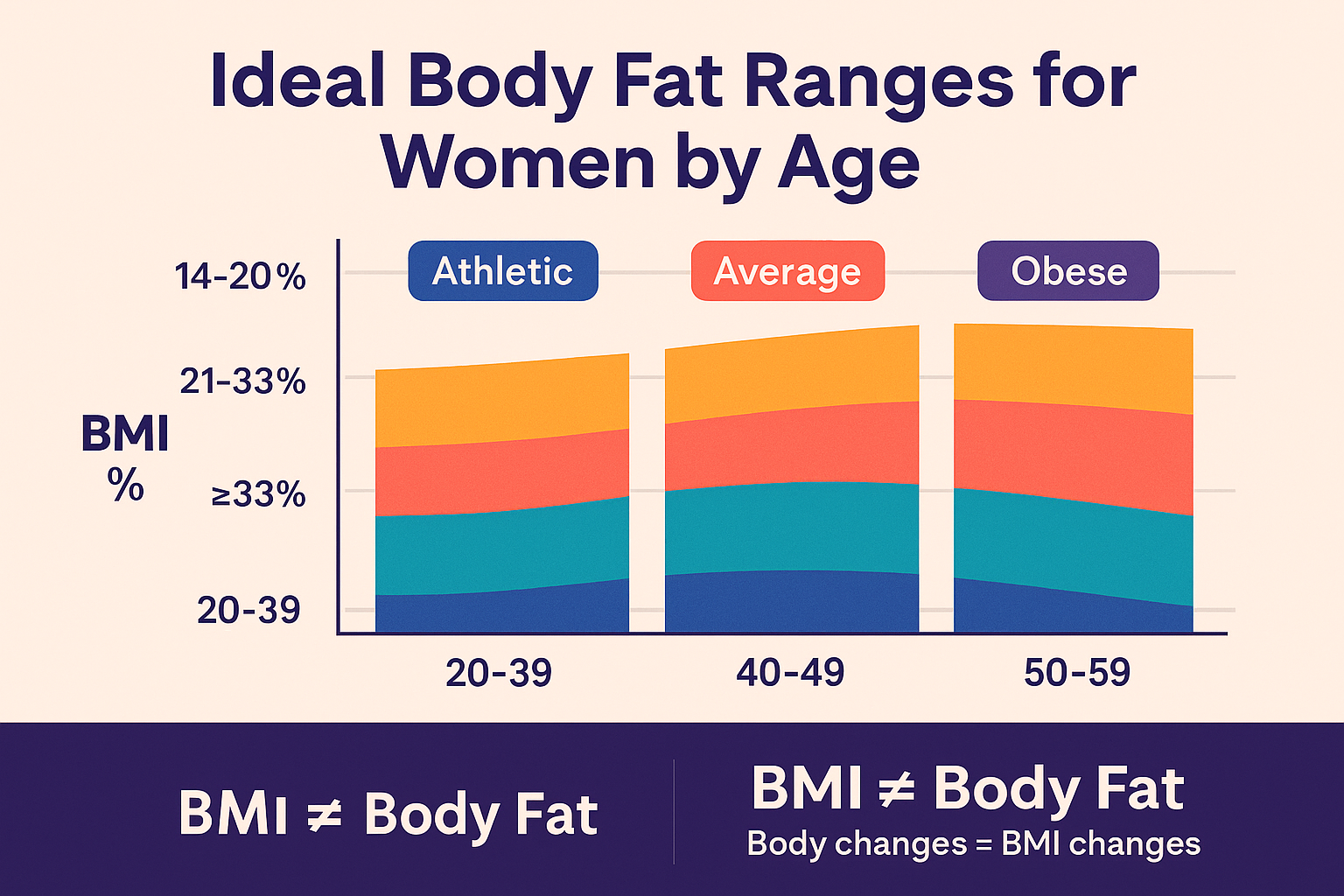
“A normal BMI doesn’t guarantee health—especially for women. Knowing your body fat percentage gives a more accurate snapshot of your wellness.”
Women’s Waist-to-Hip Ratio – More Predictive Than BMI
While BMI gives a generalized view of body mass, it doesn’t reflect where fat is stored and that makes a big difference. For women, waist-to-hip ratio (WHR) is one of the most reliable indicators of metabolic health and cardiovascular risk.
Among the most valuable alternative health metrics for women, waist-to-hip ratio helps predict health risks more effectively than BMI.
What Is Waist-to-Hip Ratio and Why Does It Matter?
Waist-to-hip ratio compares the circumference of your waist to that of your hips. It helps distinguish between:
- Apple-shaped bodies (more fat around the abdomen)
- Pear-shaped bodies (more fat around the hips and thighs)
Women with a higher WHR (apple-shaped) tend to carry more visceral fat the kind linked to heart disease, Type 2 diabetes, and high blood pressure. In contrast, pear-shaped fat distribution is generally less harmful.
How to Measure WHR in Women
- Measure your waist (narrowest part, usually above the belly button)
- Measure your hips (widest part of your buttocks)
- Divide waist by hip
Waist ÷ Hip = WHR
What’s a Healthy WHR for Women?
| WHR Value | Risk Level |
|---|---|
| 0.80 or less | Low (Healthy) |
| 0.81–0.85 | Moderate Risk |
| 0.86+ | High Risk (Apple) |
According to the WHO, women with a WHR of 0.85 or higher are at greater risk for chronic disease, even if their BMI is normal.
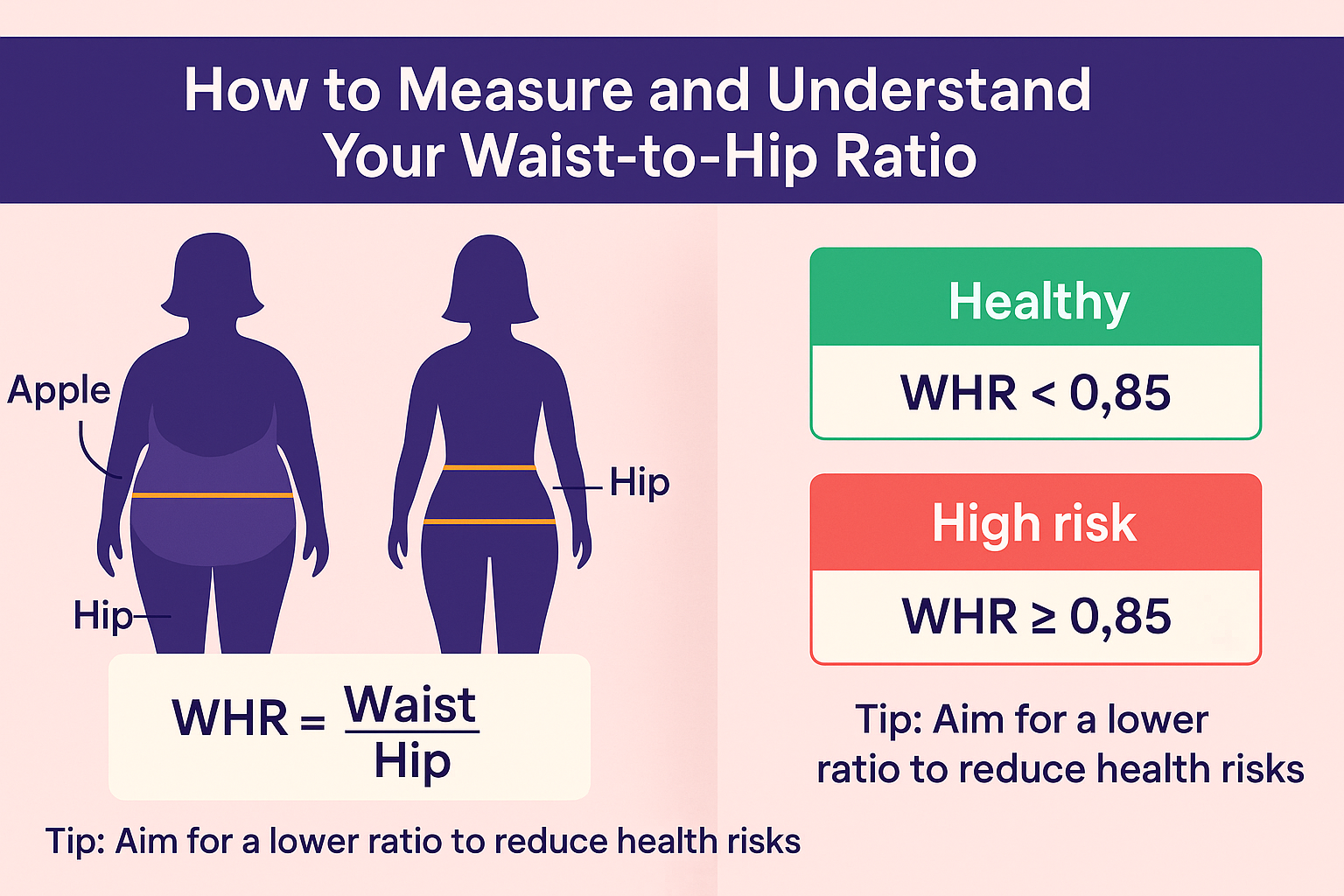
“Your waist-to-hip ratio reveals risks your BMI can’t. For women, it’s one of the most reliable predictors of metabolic health.”
For a clearer understanding of how your body composition relates to BMI, try our BMI Calculator for Women. It’s designed with hormonal and physiological differences in mind.
How Hormones Affect Weight & Body Fat in Women
Hormones play a central role in a woman’s body composition, metabolism, and fat distribution which is why BMI alone can feel confusing or inaccurate. Understanding hormones and weight in women is essential to interpreting health metrics meaningfully.
Tracking body fat percentage is one of the core alternative health metrics for women, especially for those navigating pregnancy, fitness, or menopause.
Hormonal Phases and Their Impact on Weight
Let’s explore how each phase of a woman’s hormonal life cycle can affect body fat and weight:
1. Menstruation (Estrogen & Progesterone Fluctuation)
- Temporary fluid retention, bloating, and mild weight gain are common
- Hormonal dips can influence appetite and cravings
2. Pregnancy
- Natural and necessary weight gain occurs
- Fat is stored strategically (hips, thighs, abdomen) to support fetal growth and breastfeeding
- BMI during pregnancy can mislead without context
3. Menopause
- Estrogen levels drop, causing fat to shift from hips/thighs to abdomen
- Muscle loss is also common, lowering basal metabolic rate (BMR)
- Even women with a “normal” BMI may develop central obesity
Why Hormonal Shifts Matter
- Hormones directly affect female body fat distribution health
- These changes are not always visible on the BMI scale
- Relying solely on BMI may overlook health risks like insulin resistance, metabolic syndrome, or osteoporosis
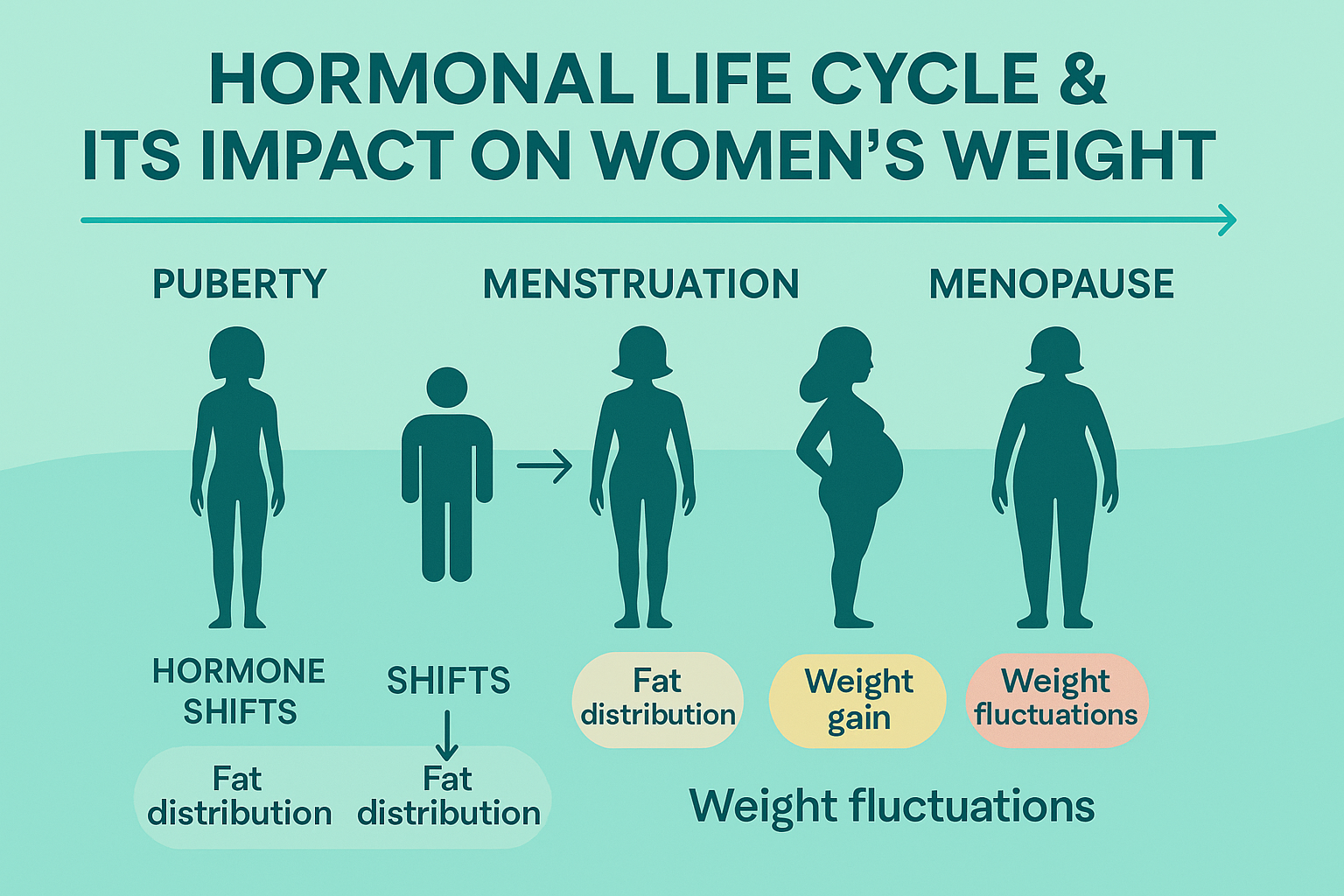
BMI is just the beginning. Alternative health metrics for women reveal the full story from fat distribution to hormonal changes.
Female Body Fat Distribution – Why Pear-Shaped Can Be Healthier
Not all fat is created equal especially in women. Where your body stores fat (not just how much) plays a major role in your health. That’s why understanding female body fat distribution is critical for getting the full picture beyond BMI.
Apple vs. Pear: What’s the Difference?
Apple-Shaped (Central Obesity):
- Fat is stored around the abdomen and waist
- More visceral fat, which surrounds organs
- Higher risk of heart disease, Type 2 diabetes, and inflammation
Pear-Shaped (Gluteofemoral Fat Storage):
- Fat is stored in the hips, thighs, and buttocks
- Mainly subcutaneous fat, which is less harmful
- Considered metabolically protective in many studies
Why This Matters More for Women
- Women are more likely to carry fat in the hips/thighs due to estrogen
- After menopause, fat often shifts to the belly (apple shape), increasing risk
- Body shape is a major clue to hormonal health and metabolic balance
Even two women with the same BMI may have very different health profiles based on their body shape.
Tips to Improve Fat Distribution:
- Strength training to preserve muscle mass
- Sleep and stress management (which influence cortisol levels)
- Balanced nutrition with good fats, fiber, and fewer refined carbs
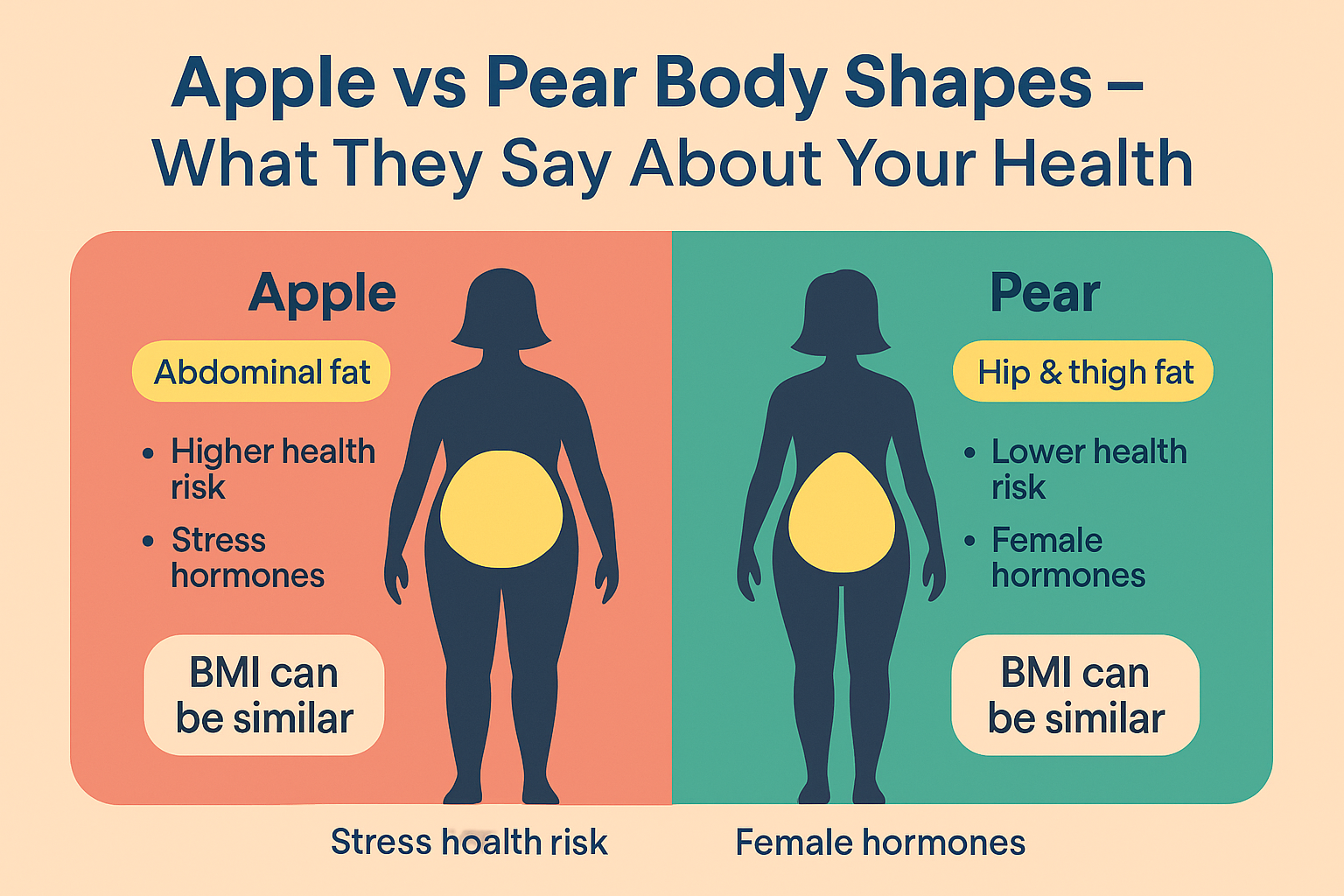
“Apple or pear? For women, fat distribution offers critical insights into heart health, hormones, and long-term wellness.”
Understanding Female Body Fat Distribution and Its Health Impacts
Female body fat distribution plays a critical role in understanding a woman’s overall health. Women naturally store fat differently from men — often around the hips, thighs, and buttocks (pear shape), especially in premenopausal years. This distribution isn’t just cosmetic; it has real implications for cardiovascular and metabolic health.
After menopause, female body fat distribution tends to shift toward the abdomen, increasing the risk for visceral fat-related conditions like Type 2 diabetes and heart disease. This change often occurs even when BMI remains the same.
Understanding Female Body Fat Distribution and Its Health Impacts
Female body fat distribution refers to how fat is stored across different parts of the body — and it varies greatly between life stages and hormonal shifts. While BMI may show a “healthy” range, where the fat is located can have greater health consequences.
Key Patterns of Fat Distribution in Women:
- Premenopausal Women: Typically store more fat around hips, thighs, and buttocks — also known as a “pear-shaped” body.
- Postmenopausal Women: Experience fat shifting toward the abdomen — leading to a “apple-shaped” body, linked with higher visceral fat.
- Hormonal Influence: Estrogen plays a major role in determining where fat is stored; a decline in estrogen shifts fat toward the belly.
- Health Impact: Abdominal (visceral) fat is more metabolically active and associated with a higher risk of heart disease, insulin resistance, and inflammation.
Comparison Table: Female Body Fat Distribution Patterns
| Body Shape | Common in | Fat Location | Risk Level | Hormonal Role |
|---|---|---|---|---|
| Pear Shape | Premenopausal | Hips, thighs, buttocks | Lower health risk | Higher estrogen |
| Apple Shape | Postmenopausal | Abdomen (visceral fat) | Higher health risk | Lower estrogen |
| Even Distribution | Active/younger | Balanced across body | Moderate | Stable hormone levels |
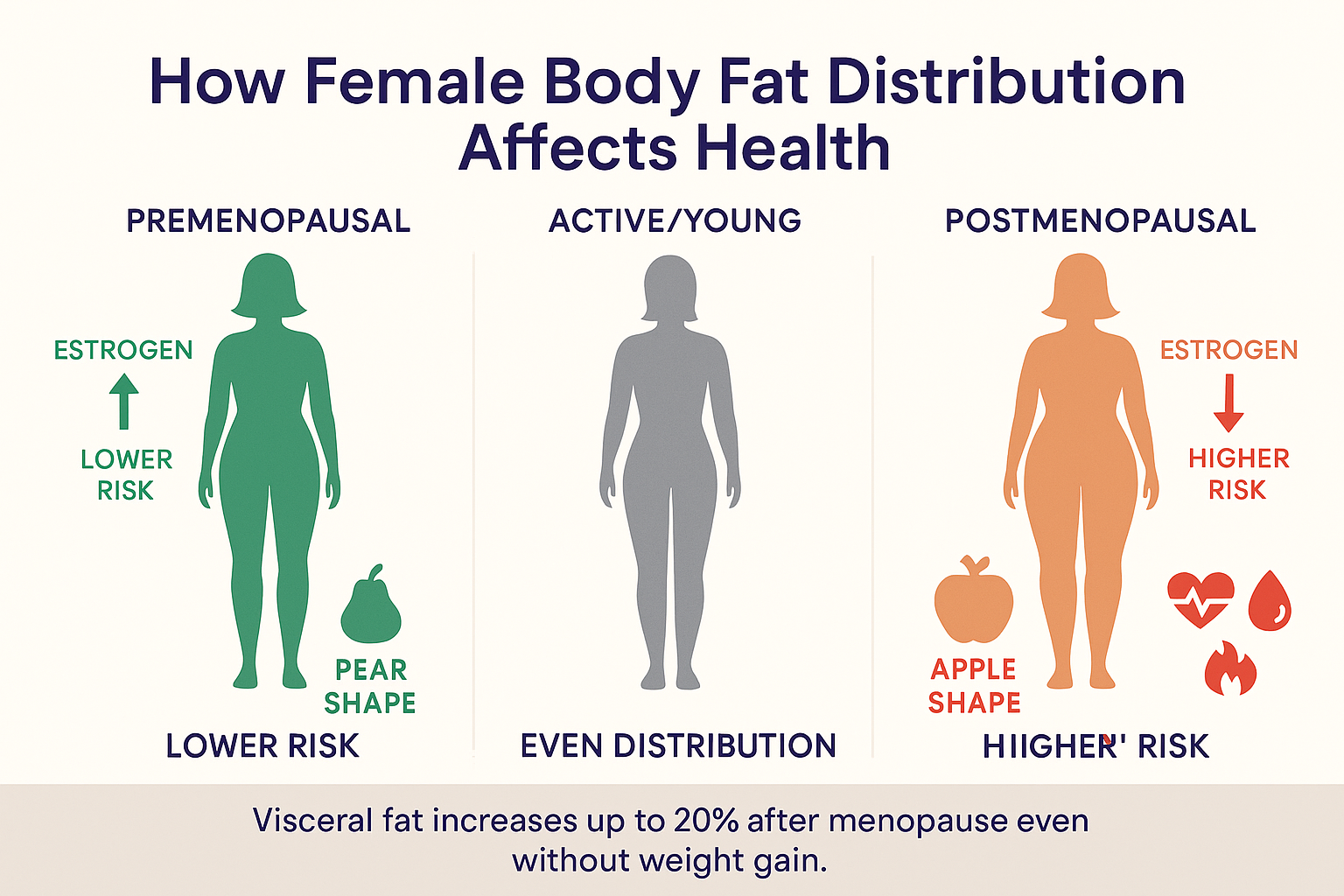
“Not all body fat is the same. Understanding female body fat distribution reveals how where you store fat can be more important than how much.”
Alternative Health Metrics Women Should Use Together
Relying on just one metric like BMI won’t give a complete picture of your health. For women, a more accurate approach involves combining multiple alternative health metrics to understand what’s truly happening inside the body.
These tools work best when used together, not in isolation.
Top Metrics to Track for Women’s Health
| Metric | What It Measures | Why It Matters |
|---|---|---|
| BMI | Weight in relation to height | Good starting point, but not body composition-aware |
| Body Fat % | Fat vs lean mass | Shows true body composition; crucial for women’s health |
| Waist-to-Hip Ratio | Fat distribution | Predicts metabolic and heart disease risk |
| Muscle Mass | Strength and metabolic health | Higher muscle mass = better metabolism, less fat retention |
| Hormonal Balance | Estrogen, cortisol, insulin, etc. | Affects fat storage, mood, energy, and weight fluctuations |
Why This Approach Works for Women
- Individual metrics miss nuance: You may have a normal BMI but high body fat.
- Hormonal influence is dynamic: What’s “normal” shifts over time.
- Body shape impacts health risk: Visceral fat vs. subcutaneous fat matters.
When you track more than one health indicator, you gain a clearer, personalized understanding of what’s really going on and how to improve it.
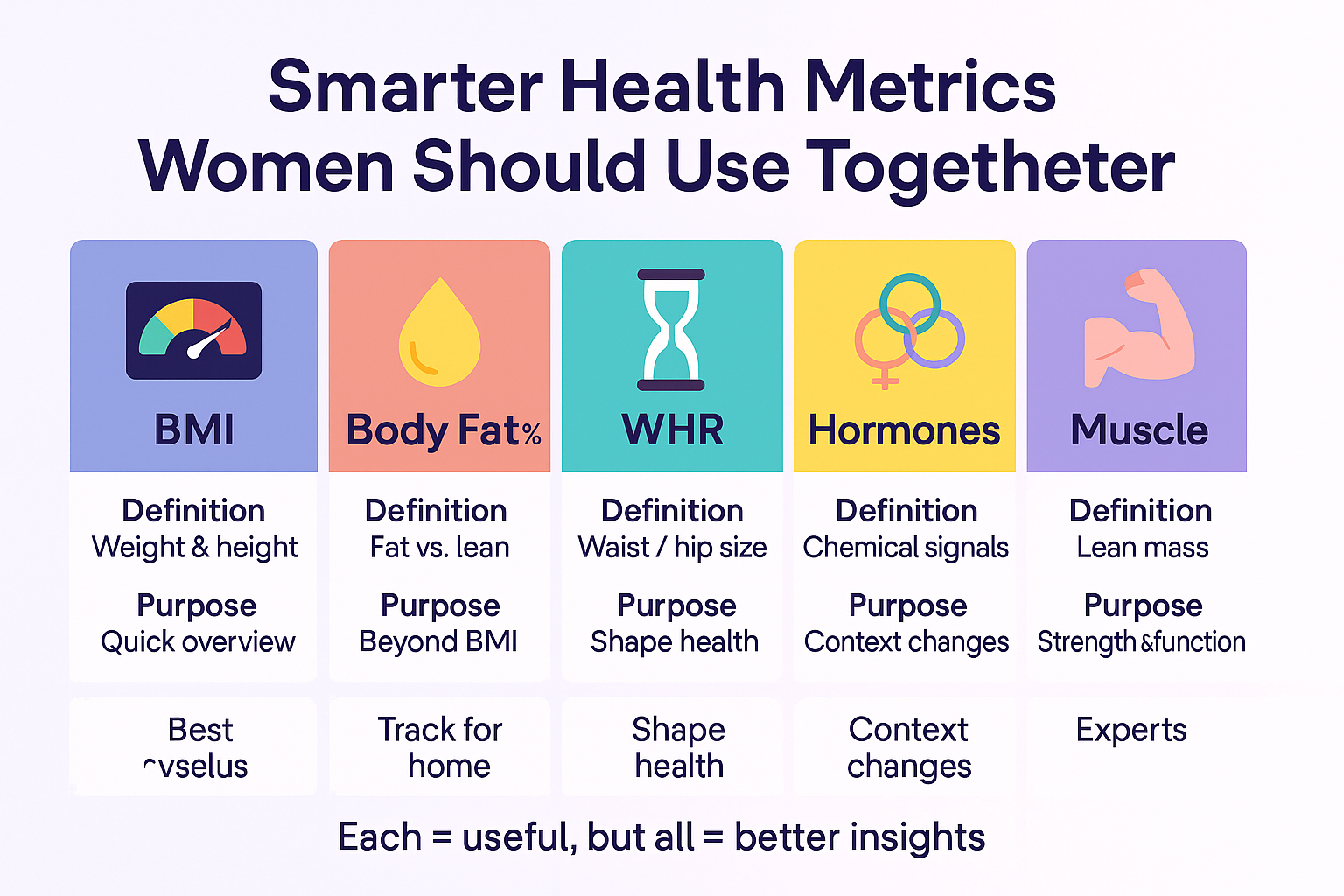
“Smarter health tracking for women starts when you combine metrics not just measure your weight.”
Related BMI Tools & Calculators for Women
When it comes to understanding your health as a woman, relying on BMI alone often falls short. To get a clearer and more accurate view of your wellness, it’s essential to incorporate alternative tools that measure fat distribution, body composition, and metabolism not just weight and height.
Useful Health Metrics Tools Beyond BMI
Here are powerful tools that complement BMI for a fuller picture of your health:
- Body Fat Percentage Calculator
Estimates the percentage of your weight that comes from fat — a crucial number for women’s health and fitness. - Waist-to-Hip Ratio Calculator
Helps determine fat distribution, which predicts heart and metabolic risks more accurately than BMI alone. - BMR (Basal Metabolic Rate) Calculator
Calculates how many calories your body burns at rest, helping you better manage energy needs and weight. - Lean Body Mass Calculator
Useful for tracking muscle mass vs. fat mass, especially important during fitness programs or menopause. - Visceral Fat Estimate Tools
Typically part of smart scales or clinical scans (like DEXA), these estimate hidden fat stored around organs.
❗ Note: While some of these require tools or devices (like calipers, BIA, or smart scales), many can be accessed online or estimated using formulas.
Want a Quick BMI Snapshot Instead? Use Our Free Calculators
If you’re just starting and want to get a baseline, use one of our custom-built BMI calculators tailored to your needs:
- General BMI Calculator
- BMI Calculator for Women
- BMI Calculator for Men
- BMI Calculator for Kids
- BMI Calculator for Teens
- BMI Calculator for Seniors
These calculators are designed to reflect different physiological needs — so women in all life stages can track their BMI more accurately.
“Tools like waist-to-hip ratio and body fat % offer deeper insight into women’s health. Use them alongside BMI to track what truly matters.”
Frequently Asked Questions
What is a healthy body fat percentage for women?
Generally, a healthy range is between 21% to 33% for adult women, depending on age and activity level. Athletes may fall in the 14–20% range.
Why is BMI less accurate for women?
BMI doesn’t account for hormonal influences, body fat percentage, or female body fat distribution, which are key to accurate health assessment. Women’s bodies change throughout life — and BMI doesn’t reflect those nuances.
How does menopause affect BMI and fat storage?
During menopause, estrogen declines, often causing fat to shift from hips and thighs to the abdomen. This changes female body fat distribution and increases health risk even if BMI remains unchanged.
What is female body fat distribution?
Female body fat distribution refers to how fat is stored in different areas of a woman’s body — typically hips/thighs before menopause and abdomen afterward. This shift has important implications for cardiovascular and metabolic health.
How can I measure my body fat percentage?
You can use tools like skinfold calipers, smart scales with bioelectrical impedance, or professional DEXA scans. Online calculators can provide rough estimates when these aren’t available.
Is waist-to-hip ratio better than BMI?
Yes — waist-to-hip ratio provides a better picture of health risks for women by showing where fat is stored, not just how much you weigh. It’s one of the best alternative health metrics for women.
Can I rely on BMI alone for my health tracking?
No. While BMI is a good screening tool, it should be combined with other indicators like body fat %, waist-to-hip ratio, and hormonal considerations.
To get a fast and female-specific BMI reading, try our BMI Calculator for Women.
Where can I check my BMI using a female-focused tool?
You can use our BMI Calculator for Women — designed to reflect women’s unique physiology and health needs across life stages. It’s free, accurate, and simple to use.
